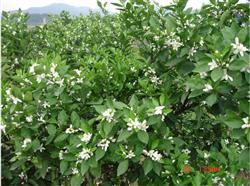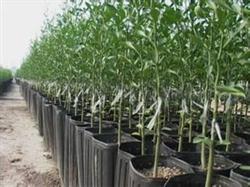A New method of protecting Flowers and fruits of Citrus without hormone

Citrus flower and fruit protection is one of the important measures for high quality, high yield and stable yield cultivation of citrus, especially for citrus suffering from light freezing in winter, flower and fruit protection is more important. In view of the fact that fruit protection by spraying "920" and 2mai 4rel D is easy to cause abnormal fruit, and will pollute the fruit and affect the quality of citrus, the following are several pollution-free measures to protect flowers and fruits without hormones and plant growth regulators: 1. Use Guangzengsu 802 to protect flowers and fruits. Foliar spraying of Guangzengsu 802 can improve the function of leaves, increase leaf thickness, increase chlorophyll content, promote crown growth, enhance disease resistance of fruit trees, and have a significant effect on flower and fruit protection and fruit setting rate of fruit trees. it opened up a new way for high and stable yield and improving fruit quality of citrus. Guang Zengsu 802 was sprayed 2-3 times at the early flowering stage and fruit setting stage of citrus, and 20 kg of water was sprayed on the leaves every 10 grams of Guang Zengsu 802. 2. Foliar spraying fertilizer to protect flowers and fruits. In spring, citrus is in the stage of sprouting, flowering, vigorous division of young fruit cells and alternating between new and old leaves, which will consume a lot of stored nutrients, at the same time, the soil temperature is generally low, and the root absorption capacity is relatively poor, especially for orange trees with large flower quantity and poor tree potential. Foliar fertilizer spraying has a good effect on flower and fruit protection. Because after foliar fertilizer spraying at flowering stage, the nitrogen content in flowers increased significantly, the dry matter and diameter of young fruits increased significantly, and the fruit setting rate increased. The commonly used foliar spraying method is to spray 0.3-0.5% urea or 0.3% urea plus 0.3% potassium dihydrogen phosphate mixture at flowering stage, and spray again 15-20 days after flowering. 3. Protect the fruit with rice vinegar. Rice vinegar contains 17 kinds of amino acids such as lysine, glutamic acid and alanine, as well as glycerol, aldehydes and various salts, which can promote the synthesis of chlorophyll, improve photosynthetic efficiency and increase the accumulation of organic matter. enhance the absorption of nutrients by citrus, increase leaf area and promote fruit expansion, so as to improve the yield and quality of citrus, which can generally increase the yield and quality of citrus by more than 10%. From late May to early July, spray once every 10-15 days, spray 3-4 times continuously, and the concentration should be 300 times. When spraying, cloudy mornings and afternoons with no wind and dew should be chosen, and sunny days should be carried out after 3-4 p.m. The vinegar is sprayed evenly on the leaf surface and leaf back with a small aperture sprayer, and it can also be used with potassium dihydrogen phosphate, agricultural rare earth or boron fertilizer. 4. Rare earth is used to protect flowers and fruits. According to the experiment, spraying rare soil solution to protect flowers and fruits was the best to spray three times in the period of flower bud germination, bud initiation and young fruit expansion, the fruit setting rate increased by 38.1%, and the yield increased by 27.9%. In production practice, it is generally sprayed for the first time from flower bud germination to the initial bud stage, and the second time after the second physiological fruit drop, and the rare earth solution with a concentration of 300 mg / kg is generally used.
- Prev

What are the common bud grafting methods for citrus? How to do it?
The methods of citrus grafting can be divided into three types: budding, ventral grafting and cutting grafting. Spring splicing is mostly used in the south subtropics with higher temperature, while bud grafting or multiple grafting is mostly used in the middle subtropics and the north in autumn. Citrus bud grafting has "T" bud grafting and inverted "⊥" bud grafting, both methods are used everywhere, suitable grafting period.
- Next

Key points of citrus cultivation in April
During the spring shoot emergence period of April (Qingming Festival ~ Grain Rain), the flower bud stage and flowering stage were more overcast and rainy than sunshine in late March, especially in the early ten-day period, and the temperature was on the low side, which affected the spring shoot emergence of citrus. According to the weather forecast, the rainfall in the first ten days of April is less than that of normal years, and the average temperature is higher than that of normal years. The citrus orchard rains in spring.
Related
- Moge, come on! The staff of the peasant association in the producing area of cantaloupe were frightened when the crowd gathered.
- Causes and Solutions of low Fruit setting rate of Apple
- Symptoms and control measures of passion fruit virus disease
- Fruit growing lesson: how do apple orchards keep high yields?
- Can you build orchards in the mountains? What are the pros and cons?
- How to manage the coloring period of Crisson grape?
- This paper introduces the processing technology of two kinds of fig products.
- How much is a month for retired teachers in rural areas by 2020?
- How can strawberry planting increase sugar content? We should pay attention to management in many aspects.
- What are the cultivation techniques on how to improve the yield of golden fruit?

